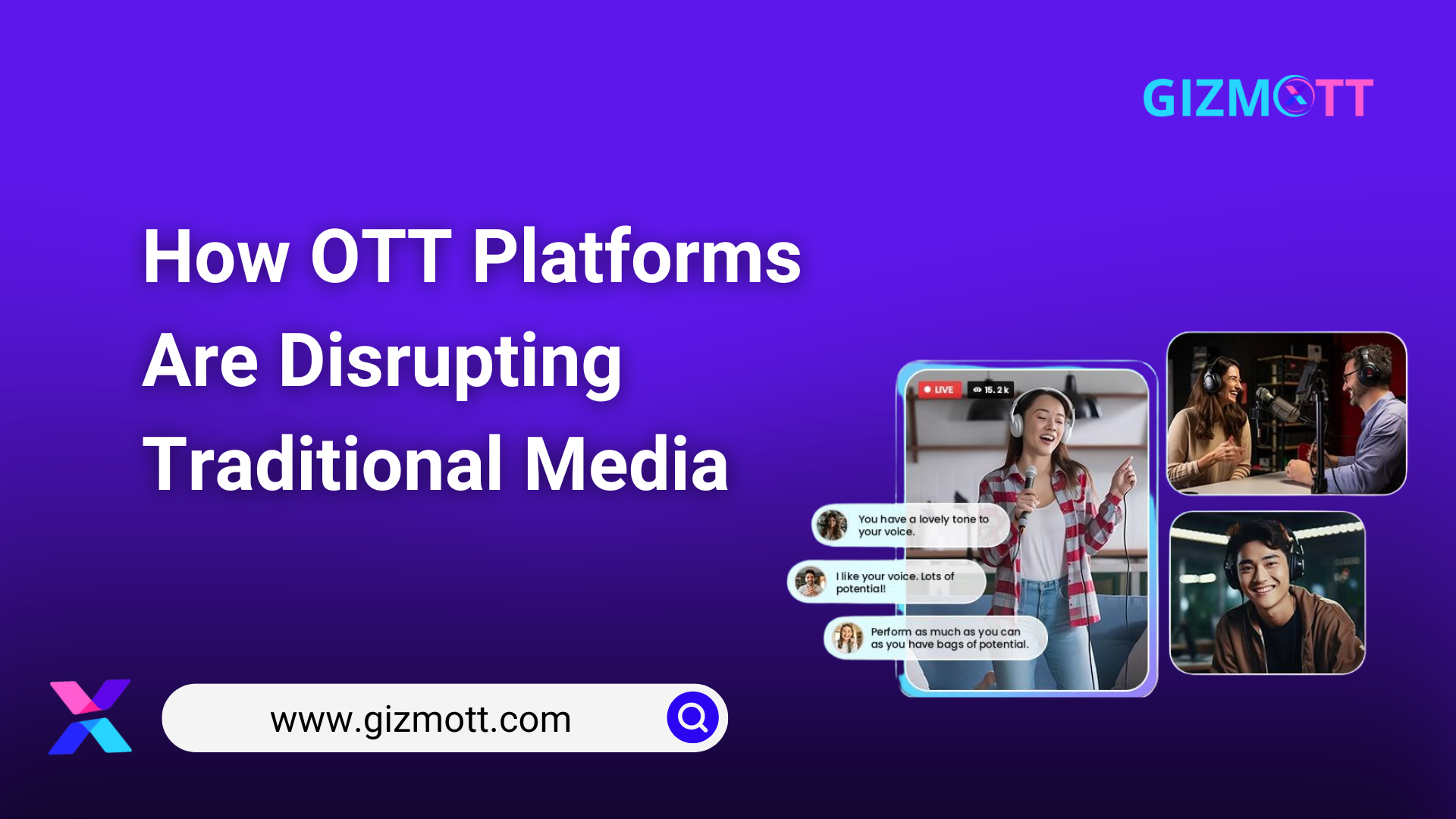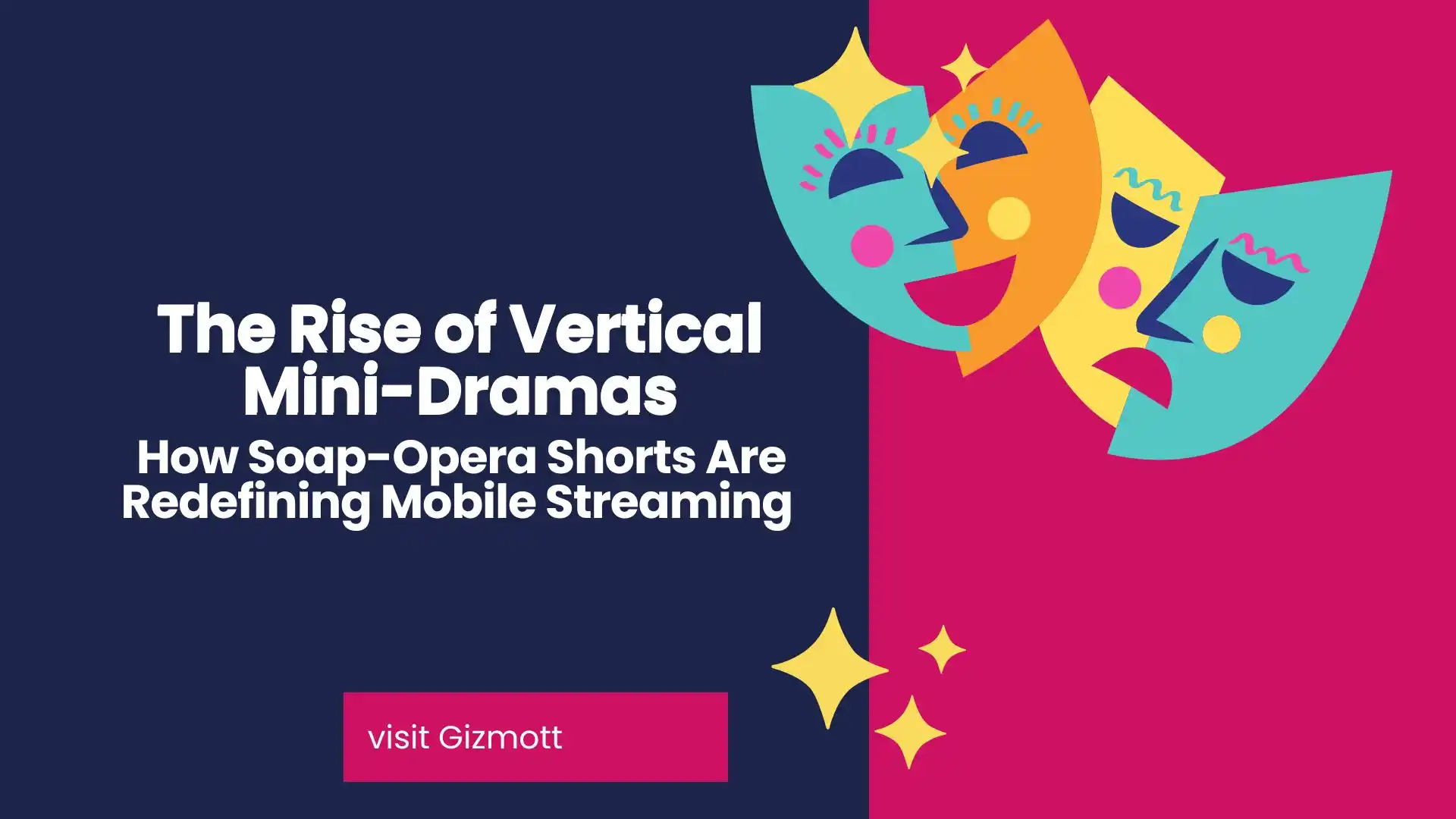How OTT Platforms Are Disrupting Traditional Media: Top OTT Trends & Market Size 2025
Keywords Targeted: OTT platforms, streaming services, video streaming market, OTT trends 2025, best streaming services 2025, Netflix vs competitors, OTT market size, FAST channels, AI personalization OTT.
Introduction: OTT Platforms vs Traditional Media
The era of scheduled television and expensive cable packages is ending. OTT platforms—also known as streaming services or video streaming platforms—are reshaping the way people watch movies, TV shows, and live events. By 2025, the global OTT market size is projected to skyrocket, with platforms like Netflix, Disney+, Amazon Prime Video, and regional services dominating entertainment.
With searches like “best streaming services 2025”, “OTT trends 2025”, and “OTT platform growth” climbing rapidly, it’s clear that streaming has overtaken traditional TV as the preferred entertainment model.
OTT Market Size & Statistics 2025: The Numbers Behind the Boom
The video streaming market is experiencing explosive growth:
-
Global OTT market size: USD 674.25 billion in 2024, projected to reach USD 811.37 billion in 2025 and a staggering USD 2,660.88 billion by 2032.
-
Netflix subscribers: Over 260 million paid users globally in 2024, expected to reach 300+ million by 2025.
-
Amazon Prime Video: Around 200 million subscribers worldwide.
-
Disney+: Over 150 million subscribers.
-
Streaming ad revenues (AVOD + FAST): Estimated to exceed USD 400–500 billion by 2025–2026.
-
Global CAGR for video streaming remains strong at 18–20% between 2025–2030.
These figures confirm what users are searching for: OTT platforms and streaming services are not just a trend—they are the future of global entertainment.
Top OTT Trends 2025 Driving Streaming Services
1. Hybrid Monetization Models: SVOD, AVOD & FAST Channels
High-search keywords: hybrid monetization, FAST channels, ad-supported streaming
Consumers want flexibility, and OTT platforms are responding by blending Subscription Video on Demand (SVOD), Ad-supported Video on Demand (AVOD), and Free Ad-supported TV (FAST).
-
FAST channel audiences are expected to grow by 150–200% by the end of 2025.
-
AVOD + FAST revenues may surpass USD 500 billion by 2026.
2. AI Personalization & Recommendation Algorithms
High-search keywords: AI personalization OTT, personalized streaming, smart recommendations
By 2025, over 70% of total viewing hours on major streaming platforms will come from AI-powered recommendations. Personalization drives user retention and binge-watching, making it a critical differentiator for services like Netflix, Disney+, and Amazon Prime.
3. Regional OTT Content & Local Language Originals
High-search keywords: regional OTT content, local language streaming, regional originals
Emerging markets are witnessing a surge in local-language demand. By 2025, over 50% of new OTT subscriptions will come from regional OTT platforms offering localized content.
Netflix and Disney+ are aggressively producing regional streaming originals to compete with local platforms.
4. Connected TV (CTV) & Smart TV Streaming Growth
High-search keywords: OTT on TV, smart TV streaming, Connected TV
Between 2025–2028, 100–150 million new households are projected to adopt Connected TV (CTV) devices such as Roku, Fire TV, and Android TV. This shift cements OTT platforms as the preferred choice for in-home entertainment.
5. Interactive Streaming & Microdramas
High-search keywords: interactive streaming, immersive content, microdrama platforms
Interactive content formats—live polls, quizzes, and choose-your-own storytelling—are growing rapidly. By 2026, 25–30% of global streaming platforms are expected to offer AR/VR streaming or interactive experiences.
Netflix vs Competitors: Who Leads the Streaming War?
When audiences search “Netflix vs competitors” or “best streaming services 2025”, Netflix remains the benchmark. Its strong brand, AI-driven personalization, and deep content library give it an edge.
However, Disney+, Amazon Prime Video, HBO Max, and regional OTT platforms are closing the gap with original programming and hybrid monetization models.
Forecast for the Future of OTT Platforms
-
2025–2026: Streaming ad revenues (AVOD + FAST) to exceed USD 500 billion.
-
2026–2028: 25–30% of platforms integrate AR/VR interactive content.
-
2030: Global OTT market size projected to reach USD 1.5–2 trillion.
-
Netflix may surpass 300–312 million subscribers by 2026.
-
OTT penetration in emerging markets expected to exceed 60% by decade’s end.
These numbers confirm that OTT platforms will continue to disrupt traditional media for years to come.
Gizmott: The Next-Gen OTT Platform Service Provider
While Netflix and Disney+ dominate headlines, Gizmott is quietly empowering content creators, broadcasters, and businesses to launch their own OTT platforms with complete ownership and advanced monetization tools.
Why Choose Gizmott?
-
Custom OTT platform development with full brand control.
-
Multiple monetization options: SVOD, AVOD, TVOD, and FAST channels.
-
AI personalization tools for tailored content recommendations.
-
Global delivery across web, mobile, and smart TV.
-
Integration with ad-supported models for hybrid revenue growth.
As the demand for streaming continues to surge in 2025, Gizmott gives you the power to compete with industry giants like Netflix and Disney+—without the middleman.
💡 Pro Tip: For businesses looking to capitalize on OTT growth, launching a branded platform with Gizmott means owning your audience, your revenue, and your future.
Final Word: The Future Belongs to Streaming
Traditional TV’s decline is no longer a prediction—it’s a reality. With OTT platforms leveraging AI, FAST channels, regional content, and interactive experiences, streaming services are redefining entertainment.
Whether you’re a creator looking to monetize content or a business aiming to launch a scalable video platform, the message is clear:
The future of entertainment is streaming, and platforms like Gizmott – The Top OTT Platform service Provider make it accessible to everyone.



